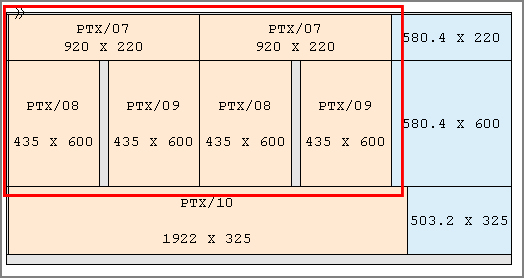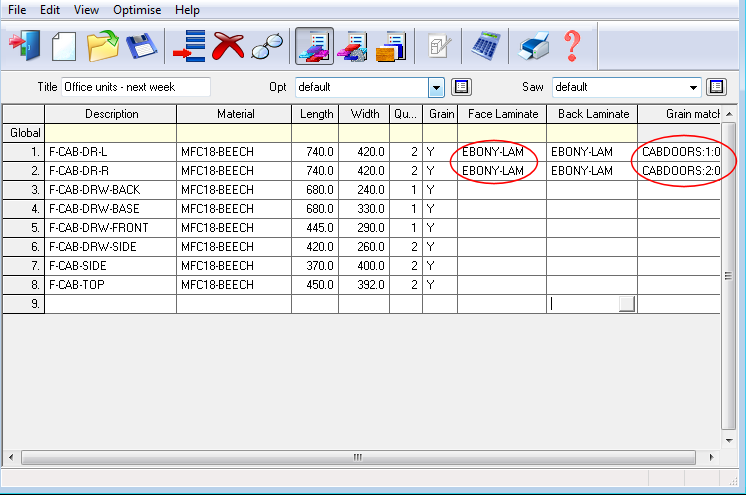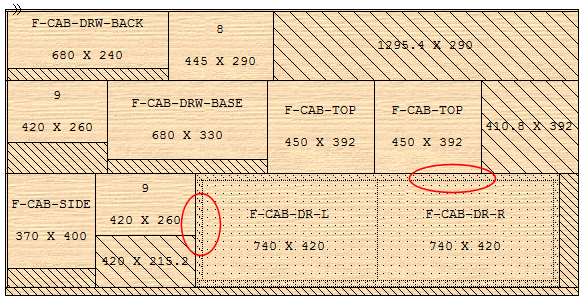

Information on editing and using patterns in the pattern library
The following sections describe how template patterns operate. A pattern template is a pattern stored in the Pattern library; it shows the arrangement of parts in the pattern. They are typically used for grain matching to ensure that groups of parts are placed on a pattern in the correct arrangement. Templates for grain matching are usually simple patterns such as two opposing doors or a set of drawer fronts for a cabinet - but more complex arrangements are sometimes needed.

Head cuts not allowed
All template patterns must be valid patterns in terms of allowed strips, head cuts and re-cuts but there are extra restrictions for templates that are cut as part of the main pattern (this is set by the template properties). When a template is placed in a strip to be cut as part of the pattern if the pattern is too complex this would create a strip that could not be easily cut at the saw.
The main restriction is that Head cuts are NOT allowed.
Grain matching - Core oversize for laminating
Where the Edging parameter 'Core oversize for laminating' is used this parameter also applies to any templates set up for gain matching.
At the Pattern library the trims are set for the template in the usual way (for example 10mm). The core oversize value is applied during optimisation when the template is used in a part list. The core oversize is applied to the edges of the master part.

The master part includes the core over trim distributed evenly over the master part (in this case 20mm on each edge).

Notes
- Where template patterns are cut separately (after first being divided as a larger or master part in the main pattern) no restrictions apply.